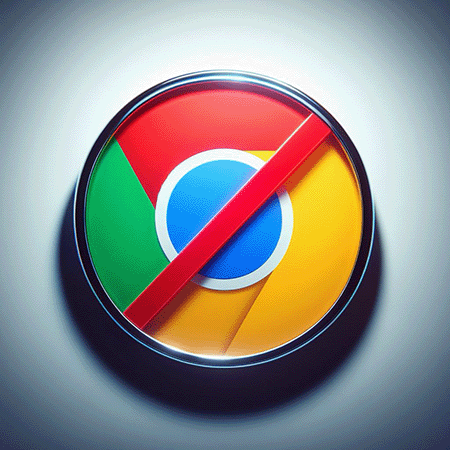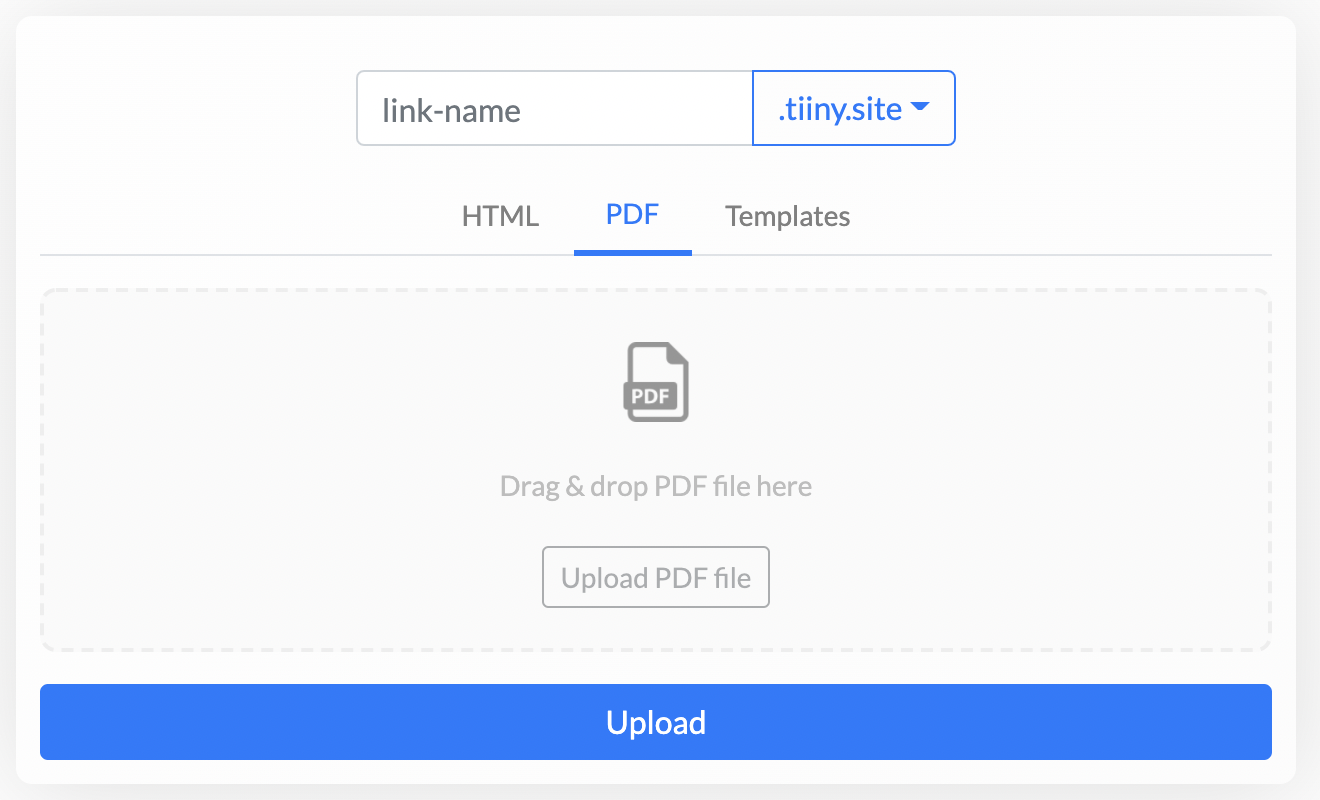- Can You Still Host a Website on Google Drive?
- What You Can and Can’t Do with Google Drive Hosting
- How to Host a Website on Google Drive (Step by Step)
- Pros and Cons of Hosting on Google Drive
- A Better Alternative: Tiiny.host
- Who Should Still Use Google Drive Hosting?
- Who Should Use Tiiny.host Instead?
- Conclusion
- FAQs
Google Drive is one of those tools almost everyone has used at some point. It’s free, easy to access, and makes file storage and sharing incredibly simple. But here’s a question many curious web creators still ask: Can you host a website on Google Drive?
The short answer is: sort of, but not really.
Yes, you can upload HTML, CSS, and JavaScript files to Google Drive and share them publicly. With a few tricks, those files can even display in a browser like a regular web page. But it’s not true web hosting in the professional sense. It’s more of a workaround than a real solution.
In this guide, we’ll explain:
- How Google Drive hosting works today (and how it used to work in the past).
- Step-by-step instructions for setting up a simple static site.
- The pros and cons of this method.
- Why a platform like Tiiny.host is usually the better alternative for anyone serious about sharing projects online.
Let’s dive in.
Can You Still Host a Website on Google Drive?
If you’ve read older tutorials from before 2016, you may have seen people rave about Google Drive as a free hosting option. Back then, Drive included an official website hosting feature. You could upload HTML files, link to them directly, and—voilà!—your website was live.
Unfortunately, Google retired that feature in August 2016. Since then, hosting directly on Drive hasn’t been officially supported.
But… the internet is clever. Developers figured out workarounds using Drive’s public file-sharing system combined with third-party tools. These tricks don’t fully replicate hosting, but they do let you serve static websites in a very limited way.
So yes—you can still host a website on Google Drive. But it comes with significant limitations.
What You Can and Can’t Do with Google Drive Hosting
Before we walk through the steps, let’s set expectations. Hosting on Drive is not the same as using a proper web host. Here’s what you’ll be able to do—and what you won’t.
What Works
- Upload and serve static files (HTML, CSS, JavaScript, images, fonts).
- Share those files publicly with anyone who has the link.
- Display simple sites or prototypes in a browser.
- Use it for internal demos, school projects, or quick experiments.
What Doesn’t Work
- Custom domains: You can’t map your site to yourname.com. Visitors will see long, clunky Google URLs or third-party redirects.
- Server-side code: No PHP, Python, Node.js, or databases—only static content works.
- SEO support: Pages aren’t indexed properly by search engines, making it useless for a public-facing website.
- Professional reliability: Links may break, third-party tools may shut down, and Google could change Drive rules at any time.
In short: if you want to put up a quick HTML site for free, it works. If you want a polished, branded, and reliable site, you’ll want something else.
How to Host a Website on Google Drive (Step by Step)
Ready to try it for yourself? Here’s the process.
Step 1: Prepare Your Files
Your website should be a static site—just HTML, CSS, and JavaScript files.
- Make sure you have an index.html file (this is the default page that browsers look for).
- Keep your assets (CSS, JS, images) organized in folders.
- Test your site locally by opening index.html in a browser to confirm everything works.
Step 2: Upload to Google Drive
- Go to Google Drive.
- Create a new folder for your site (e.g., MyWebsite).
- Upload your files and folders into it.
Step 3: Make Files Public
- Right-click the folder → Share.
- Under “General access,” choose Anyone with the link.
- Set it to Viewer.
Now, anyone with the link can access your files.
Step 4: Get a “Hostable” Link
Here’s where the workaround comes in. Google Drive links normally point to file downloads, not hosted pages. To convert them into viewable websites, you’ll need a third-party service. Popular options include:
- gdrive.pub
- DriveToWeb
These services take your Google Drive public links and transform them into actual web URLs.
For example:
https://drive.google.com/file/d/1AbcDefGhIjkL/view
becomes something like:
https://gdrive.pub/1AbcDefGhIjkL/index.html
Open the new link in your browser, and your website should display.
Pros and Cons of Hosting on Google Drive
Like any hack, this approach has trade-offs.
The Pros
- Free: Uses Google’s 15 GB of free storage.
- Simple setup: If you already use Drive, you’re halfway there.
- Good for learning: Students can practice HTML/CSS without buying hosting.
- Instant sharing: Great for quick demos or temporary projects.
The Cons
- No custom branding: URLs are messy and unprofessional.
- Not reliable: Third-party converters may go offline.
- Limited functionality: Only static files work.
- Not SEO-friendly: Search engines won’t treat your site like a real website.
- Not scalable: If you get more than a few visitors, performance tanks.
Bottom line: it’s fun to experiment with, but it’s not a serious hosting solution.
A Better Alternative: Tiiny.host
If you like the idea of a quick, free way to host a static site, but don’t want the limitations of Google Drive, Tiiny.host is a much better option.
Here’s why:
- Drag, drop, done: Upload your zipped website folder toTiiny.host, and it’s instantly live. No converters, no hacks.
- Custom domains: Use your own domain instead of a messy Google link.
- Free plan: Host small projects (up to 3 MB) for free—perfect for portfolios, resumes, or prototypes.
- Built-in features: Analytics, password protection, email capture, and QR code links.
- Scales easily: Paid plans support larger sites, custom branding, and even agency use.
It’s essentially what people wished Google Drive hosting had been—fast, simple, and reliable.
Who Should Still Use Google Drive Hosting?
Even with its flaws, Google Drive hosting might make sense in certain cases:
- Students learning basic HTML/CSS who want to test their code online.
- Hobbyists sharing quick demos with friends.
- Teams doing internal prototypes that don’t need branding.
- Anyone who wants to experiment with free tools just to see how it works.
For anything beyond that—portfolios, client projects, or small businesses—it’s not worth the hassle.
Who Should Use Tiiny.host Instead?
If you’re looking for a solution that’s just as easy as Google Drive but actually works for real websites, Tiiny.host is the obvious choice.
It’s ideal for:
- Freelancers: Designers and developers showcasing their work.
- Students & job seekers: Hosting resumes, digital portfolios, or projects.
- Businesses: Launching landing pages, marketing campaigns, or small static sites.
- Agencies: Managing multiple client projects with custom branding and analytics.
- Creators: Sharing ebooks, presentations, or online courses.
Conclusion
So, can you host a website on Google Drive? Yes—but it’s more of a party trick than a long-term solution. Google no longer supports the feature officially, and the workarounds are clunky at best.
If you just want to play around with HTML or share a quick demo, Drive hosting can be fun to try. But if you want your site to look professional, load reliably, and support things like custom domains, analytics, and password protection, you’ll want something more robust.
That’s where Tiiny.host shines. It gives you the simplicity people loved about Google Drive hosting—drag, drop, and publish—without the headaches or limitations.
In other words: skip the hacks, and use a tool built for exactly this purpose.
FAQs
Can I use Google Drive as free web hosting?
Yes, but only for static files, and only with third-party tools. It’s not officially supported anymore.
Does Google support website hosting?
No. Google discontinued website hosting in Drive in 2016. Today, you’d need a tool like Firebase Hosting, Google Sites, or a workaround with Drive.
What’s the easiest way to host a simple HTML site?
Tiiny.host is one of the easiest options: zip your files, upload, and your site is live instantly.
Can I use my own domain with Google Drive hosting?
No. That’s one of the biggest limitations. With Tiiny.host, you can use a custom domain on all paid plans.
What’s the best free alternative to Google Drive hosting?
Tiiny.host (for static sites) or GitHub Pages (for developer projects). Both are free to start, but Tiiny.host is more beginner-friendly.



